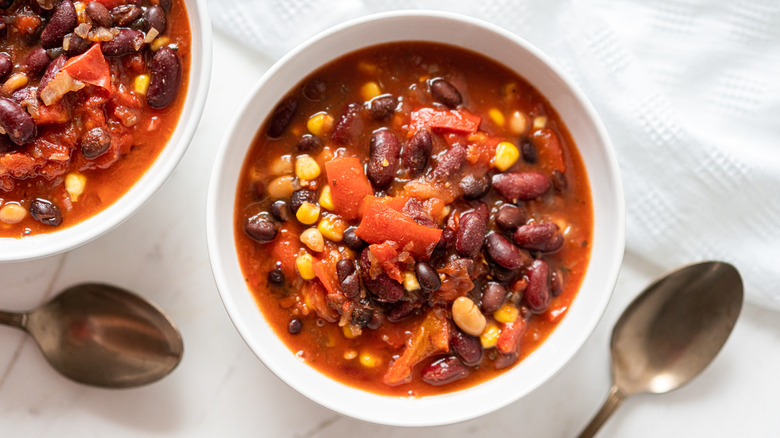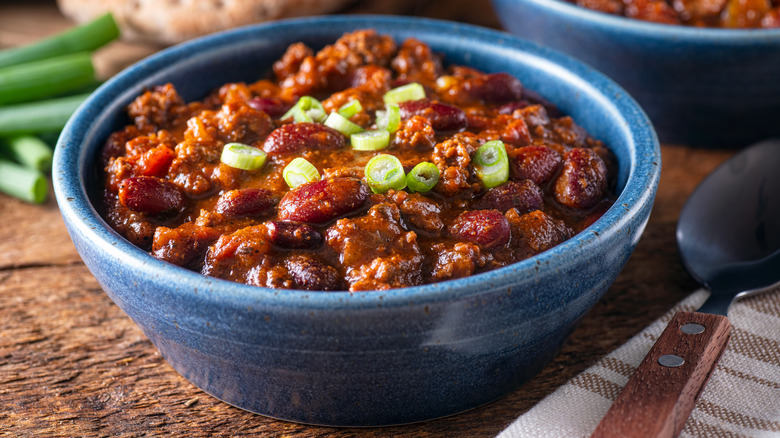Why You Should Consider Draining Canned Beans For Chili
Who among us doesn't love a bowl of chili, preferably heaped with add-ons such as shredded cheese, sour cream, sliced green onions, and crushed tortilla chips? A seemingly timeless dish that's a favorite at family dinners and potlucks, chili most likely originated — or at least was popularized — in 19th-century Texas, according to What's Cooking America. That state has claimed chili con carne as its state dish since 1977, but if your chili go-to is the type featuring beans, you'll need to look further afield than Texas, which is solidly no-bean territory (via Epicurious).
Thankfully, there's no shortage of recipes for bean-based chili, both in cookbooks and online. Our favored vegan version, for example, features kidney, garbanzo, and cannellini beans suspended in a hearty tomato sauce flavored with dried spices, and other tasty bean chilis include white chicken chili with cannellini beans and even a woodsy venison chili with pinto and black beans. All of these recipes call for using canned beans — which are an affordable, protein-packed pantry staple — but you'll likely want to make sure to drain those beans before stirring them into your favorite chili.
Too much liquid will thin your chili
If you often cook with canned beans, you know that for most dishes, it's a good idea to drain and even rinse the legumes before adding them to your dish. According to Martha Stewart, the canning liquid surrounding the beans is loaded with both salt and starch, so including the liquid in your dish can throw off both its seasoning and its texture. The same holds true for using canned beans in chili.
According to Taste of Home, you should typically drain canned beans before adding them to your pot of chili. All that liquid can seriously water the chili down, diluting all its flavors. However, don't go rinsing the bean liquid down the drain just yet.
As noted by several outlets including Cook's Country, bean canning liquid can often be used in cooking much like reserved pasta water. Since it's loaded with the starch from the beans, a portion of it can be added to soups, stews, and yes, chilis, in order to thicken them up a bit. So a good route to take with chili is to drain and rinse the beans, toss them into the dish, but reserve some of the bean liquid for later on if you find that the chili's consistency is too thin.

